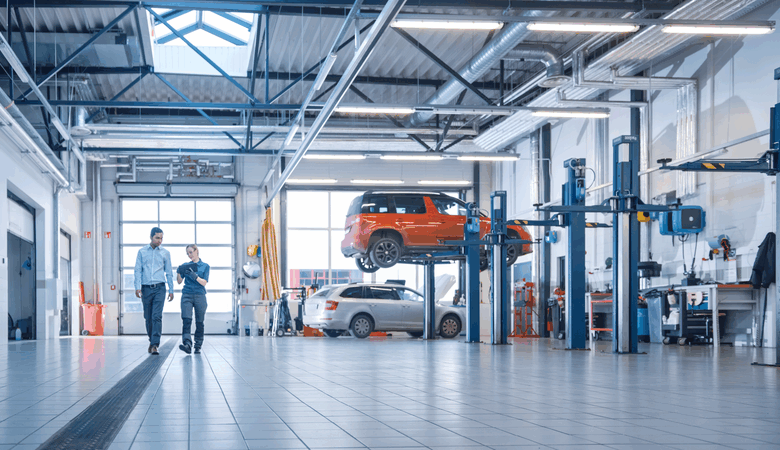
The Eroding Trust in Automotive Service
In a time where every discretionary dollar counts, the modern consumer approaches vehicle repair with a sense of apprehension. According to Consumer Affairs, a staggering 78% of car owners state they don’t trust their mechanic. Such distrust is not simply a case of paranoia, but many customers often feel overwhelmed, fearing potential unnecessary expenses, as the current auto repair experience frequently leaves car owners feeling in the dark. This common scenario initially stems from technical jargon and complex explanations, leaving them uninformed and confused. The absence of transparency makes the customer begin to question if every recommended service is truly necessary. Often, customers hand over their keys and await an update on the car’s condition, much like a daunting medical procedure.
Plus, it’s not just customers feeling the squeeze; service shops, too, face immense pressure from all sides. Whether it be the very competitive landscape or the constant scrutiny of online reviews, high overheads, and the rising cost of tools and training, auto repair shops are under constant strain. Any lack of transparency, perceived inconvenience, or upselling can quickly lead to lost business and damaged reputation. It’s a blind diagnosis where the patient fears the bill and the doctor fears the review.
A major contributor to this problem is the heavy dependence on outdated manual processes, which include paper-based systems and disconnected digital tools, creating significant obstacles for automotive service shops. This dependence impedes their capacity to effectively diagnose and repair vehicles, especially modern models like EVs whose complex software systems and fewer mechanical components make traditional diagnostics less effective, resulting in delays, errors, and a fragmented understanding of both the vehicle’s service history and the evolving needs of the customer.
Inside the shop, service advisors are interrupted around 32 times a day, leading to a whopping 580 non-productive monthly minutes, equating to a potential revenue erosion of $2,500, directly impacting a shop’s bottom line and diminishing customer satisfaction. The workflow problems come from the need to pass tasks between different team members, the advisor, or the customer, and work can’t continue if these handoffs aren’t done quickly.
Considering this, artificial intelligence (AI) workflow automation ushers in a new wave of customer-centricity and unparalleled transparency and establishes trust in the automotive service industry.
AI as the Customer’s Advocate
At its core, AI has the potential to empower service shops to become true advocates for their customers by enhancing operational efficiency and transparency. AI would not only streamline operations but also equip service shops with data to proactively address vehicle needs, offer personalized maintenance schedules, and communicate with clarity. This shift transforms them from mere repair centers into trusted consultants, ensuring long-term vehicle health and customer satisfaction.
AI-powered intelligent planning can deliver substantial efficiency gains in automotive shops. One Getac customer, Holger Hedtke, Autohaus Hedtke, Volvo & JLR Dealer, realized a 25% reduced working time for service reception and control, 10% higher technician efficiency, and 12 extra technician hours monthly gained by going paperless. While the benefits are dependent on application and client usage, meaning improvements may vary, they underscore the role of AI in transforming the automotive service experience. Some examples of this include:
- Clarity at Check-in: By providing immediate, easy-to-understand vehicle health reports right at check-in, while dynamic scheduling ensures allocation of resources, minimizing customer wait times, and streamlining the entire process.
- Transparent Inspection: Building on that efficiency, equipping staff with AI-enabled rugged tablets can facilitate digital vehicle inspections, eliminating guesswork and allowing technicians to share real-time visual evidence with customers.
- Real-time Communication: A centralized communication hub, powered by AI, dramatically reduces interruptions for service advisors, enabling them to respond promptly to inquiries and cut down on daily disruptions.
- Predictive Maintenance: Beyond the average reactive repairs, AI enables predictive maintenance. By analyzing vehicle data, driving patterns, and service records, AI can foresee potential component failures before they occur. This will allow shops to proactively recommend services based on actual wear and tear, preventing costly breakdowns.
These advancements can redefine the customer experience, moving it from one of marked anxiety and uncertainty to one of informed confidence and peace of mind. For auto repair shops aiming to retain their valuable customer base, AI is no longer just a nice-to-have but is well on its way to becoming a critical necessity.
The New Era of Customer Loyalty in Automotive Service
Ultimately, AI, particularly through integrated solutions, fosters a truly collaborative relationship between service providers and their customers; it future-proofs the automotive service industry. This doesn’t simply mean connecting software; it means creating a seamless flow of information from the initial check-in process using unified data to gather an accurate view of the vehicle’s history and customer needs.
By empowering shops with intelligent software and hardware, AI enables them to maximize their existing investments in Dealer Management Systems (DMS) and Customer Relationship Management (CRM) tools, creating a unified data view that benefits everyone. This goes beyond a simple upgrade to shop operations; it’s a fundamental shift, ensuring that every interaction is built on transparency, every diagnosis is clear, and every customer leaves with complete confidence.





